Frequency Regulation Reserve Allocation for Integrated Hydropower Plant and Energy Storage Systems via the Marginal Substitution
Abstract
1. Introduction
2. Hydro-Storage Joint Frequency Regulation System
2.1. Hydro-Storage Joint Frequency Regulation Mechanism
2.2. Modeling Frequency Response in the Hydro-Storage Joint Frequency Regulation System
3. Marginal Rate of Substitution (MRS) Effect in the Frequency
Regulation of the Integrated System
3.1. Marginal Substitution Effect
3.2. Acquisition of Marginal Substitution Curve for Hydro-Energy Storage Frequency Regulation
3.3. Operational Data Acquisition Method Based on Gaussian Process Regression
- (1)
- Prepare training and testing data: According to the model in Section 2.2, a two-dimensional grid data regarding the frequency regulation reserve capacity of hydropower units and energy storage is generated, with the output values being the RMSE values corresponding to the grid data. A small number of obtained data points are used as the training set.
- (2)
- Create and train the Gaussian process regression model: The function receives the training data and defines a Gaussian process regression model using an exponential kernel. The model is trained to minimize loss, and the function returns the trained model.
- (3)
- Generate larger grid point data and define and use the model to predict unknown values in the grid points: The function receives the trained model and prediction data and performs predictions.
- (4)
- Through Gaussian process regression, more data points can be obtained for generating the equivalence curve.
3.4. Generating Marginal Replacement Curves Based on Operational Data Sets
4. Power System Frequency Regulation Reserve Configuration Method Based on Marginal Replacement
4.1. Cost Model of Hydropower Frequency Regulation
4.2. Economic Cost Model of Energy Storage Frequency Regulation
4.3. Frequency Capacity Optimization Configuration Method with Cost Optimization as the Objective
- (1)
- Draw the equivalent curve based on the simulation results of the hydro-energy storage joint frequency regulation system. By varying the ratio of frequency regulation reserve capacity between conventional units and energy storage, obtain the output frequency performance indicators. Based on the dataset, derive the equivalent curve and fit its function expression as .
- (2)
- Utilize the method for obtaining the marginal replacement curve in Section 2.2 to determine the marginal replacement rate function for conventional units and energy storage frequency regulation based on the function ’.
- (3)
- Obtain the iso-revenue line based on the ratio of the price of conventional unit frequency regulation capacity to the price of energy storage frequency regulation capacity .
- (4)
- Calculate the marginal replacement rate for the optimal combination of conventional units and energy storage frequency regulation under the minimum cost based on .
- (5)
- By using and the marginal replacement rate function, determine the frequency regulation capacity combinations at the optimal equilibrium points.
5. Case Study
5.1. Test System
5.2. Obtaining the Marginal Replacement Curve
5.3. Analysis of Frequency Capacity Optimization Configuration with Cost Optimization as the Objective
6. Conclusions
- The proposed operational data acquisition method based on GPR and the segmented fitting approach for equivalent curves significantly reduce the difficulty of data acquisition in terms of data density and time span, without compromising data accuracy. Simultaneously, the proposed method ensures high curve-fitting precision. The error rate of the proposed data acquisition method is 1.72%, while the root mean square error (RMSE) of the proposed curve-fitting method is 0.03250;
- The proposed hydro-storage coordinated frequency regulation reserve configuration method, compared to frequency regulation using a single hydropower unit, achieves the same frequency regulation performance while incorporating the marginal substitution principle. This approach reduces the total frequency regulation reserve capacity from 125 MW to 108.22 MW, representing a 13.42% reduction in capacity. Furthermore, when considering cost factors, the frequency regulation cost decreases from 750 million RMB to 618.15 million RMB, resulting in a 17.58% cost reduction.
Author Contributions
Funding
Data Availability Statement
Conflicts of Interest
References
- Zhang, H.; Zhang, Y.; Ma, Q.; Guo, D. Development trend of new energy industry under the dual carbon goal. Energy Storage Sci. Technol. 2022, 11, 1677–1678. [Google Scholar]
- Liu, Z.; Peng, D.; Zhao, H.; Wang, D.; Liu, Y. Development prospects of energy storage participating in auxiliary services of power systems under the targets of the dual-carbon goal. Energy Storage Sci. Technol. 2022, 11, 704–716. [Google Scholar]
- Han, Z.; Ju, P.; Qin, C.; Sun, D.; Sun, H.; Zheng, Y. Review and prospect of research on frequency security of new power system. Electr. Power Autom. Equip. 2023, 43, 112–124. [Google Scholar]
- Zhao, H.; Wang, W.; Li, X.; Liu, D.; He, C. Day ahead joint trading decision model for electricity, frequency regulation and reserve market considering energy storage participation. Power Syst. Technol. 2023, 47, 4575–4584. [Google Scholar]
- Zhang, S.; Yuan, B.; Xu, Q.; Zhao, J. Optimal control strategy of secondary frequency regulation for power grid with large-scale energy storages. Electr. Power Autom. Equip. 2019, 39, 82–88, 95. [Google Scholar]
- Zhou, X.; Zhang, Y.; Ma, X.; Li, G.; Wang, Y.; Hu, C.; Liang, J.; Li, M. Performance characteristics of photovoltaic cold storage under composite control of maximum power tracking and constant voltage per frequency. Appl. Energy 2022, 30, 117–840. [Google Scholar] [CrossRef]
- Ma, Y.; Hu, Z.; Diao, R. Day-ahead optimization strategy for shared energy storage of renewable energy power stations to provide frequency regulation service. Power Syst. Technol. 2022, 46, 3857–3868. [Google Scholar]
- Li, B.; Chen, M.; Zhong, H.; Ma, Z.; Liu, D.; He, G. A review of long- term planning of new power systems with large share of renewable energy. Proc. CSEE 2023, 43, 555–580. [Google Scholar]
- Wang, N.; Li, Z.; Zhou, X.; Liu, C.; An, K.; Cong, L. Characteristics research on combined frequency regulation of AGC and energy storage in power plant and the simulation. Hydro Power Gener. 2021, 50, 148–156. [Google Scholar]
- Zhu, W.; Zhou, Y.; Xu, Y.; Shi, T. Application and optimization of battery energy storage technology in new energy generation system. Energy Storage Sci. Technol. 2024, 13, 2737–2739. [Google Scholar]
- Xu, L.; Xu, L.; Song, F. System fault monitoring and diagnostic analysis of electrochemical energy storage power stations. Energy Storage Sci. Technol. 2024, 13, 2788–2790. [Google Scholar]
- Yang, S.; Lin, W.; Cui, Y.; Wang, E. Analysis and enlightenment of AGC regulation for combined hydro and storage system based on power and capacity compensation. Energy Storage Sci. Technol. 2023, 12, 299–311. [Google Scholar]
- Xie, D.; Xu, Y.; Li, H.; Jia, X.; Liang, L.; Hong, F. Optimization of Hybrid Energy Storage Capacity Allocation Based on AGC Frequency regulation of Auxiliary hydro power Units. Electr. Eng. 2023, 19, 15–18. [Google Scholar]
- Zhang, S.; Liu, H.; Wang, F.; Hui, G.; Tianling, S. A balancing control strategy for “power-X-power” energy storage cluster in system load frequency control. Proc. CSEE 2022, 42, 886–898. [Google Scholar]
- Gao, S.; Li, J.; Song, H.; Ding, L.; Zhang, C. An integrated hydro power energy storage system for improving primary frequency regulation performance of hydro power units. Power Syst. Prot. Control 2023, 51, 116–125. [Google Scholar]
- Hong, F.; Jia, X.; Liang, L.; Hao, J.; Wang, W.; Fang, F. Research on the integration of flywheel energy storage capacity allocation under hydro-storage coupling cooperative frequency regulation strategy. Hydro Power Gener. 2023, 52, 65–75. [Google Scholar]
- Toufani, P.; Karakoyun, E.C.; Nadar, E.; Fosso, O.B.; Kocaman, A.S. Optimization of Pumped Hydro Energy Storage Systems under Uncertainty: A Review. J. Energy Storage 2023, 73, 109306. [Google Scholar] [CrossRef]
- Hederman, W.F. Electricity markets monitoring at the Federal Energy Regulatory Commission. In Proceedings of the 2003 IEEE Power Engineering Society General Meeting, Toronto, ON, Canada, 13–17 July 2003; p. 499. [Google Scholar]
- Zhao, W.; Li, B.; Wei, H.; Wei, C.; Deng, J. The optimal AGC control strategy considering the primary frequency regulation under the control performance standard for the interconnected power grid. Proc. CSEE 2016, 36, 2656–2664. [Google Scholar]
- Tang, Z.; Song, S.; Bai, X.; Wang, K. Multi-source FM Capacity Allocation Strategy Based on Master-Slave Game. Sci. Technol. Eng. 2024, 24, 7693–7700. [Google Scholar]
- Zhang, F.; Li, B.; Ding, L. Parameter setting method of time-varying frequency regulation considering linked energy distribution of wind power for frequency regulation. Autom. Electr. Power Syst. 2022, 46, 1–13. [Google Scholar]
- Yang, Y.; Wang, D.; Hu, B.; Wang, H.; Luo, H. Multi-source optimal joint frequency regulation control strategy based on improved multi-agent Q-learning. Power Syst. Prot. Control 2022, 50, 135–144. [Google Scholar]
- Ferguson, C.E.; Gould, J.P. Microeconomic Theory; McGraw-Hill/Irwin: Homewood, IL, USA, 1975. [Google Scholar]
- Yu, D.; Lo, K.L.; Wang, X.; Wang, X. MRTS traction power supply system simulation using Matlab/Simulink. In Proceedings of the IEEE 55th Vehicular Technology Conference, Birmingham, AL, USA, 6–9 May 2002; Volume 1, pp. 308–312. [Google Scholar]
- Besanko, D.; Braeutigam, R. Microeconomics; John Wiley & Sons: Hoboken, NJ, USA, 2016. [Google Scholar]
- Wagh, C.; Shivam, C.; Revati, G.; Shadab, S.; Wagh, S.R. Speed Estimation of Induction Motor Using Gaussian Process Regression. In Proceedings of the 2023 9th International Conference on Control, Decision and Information Technologies (CoDIT), Rome, Italy, 3–6 July 2023; pp. 1–6. [Google Scholar]
- Li, G.; Lu, W.; Bian, J.; Sun, Y. Probabilistic optimal power flow considering correlation and time series based on adaptive diffusion kernel density estimation. Proc. CSEE 2021, 41, 1655–1663. [Google Scholar]
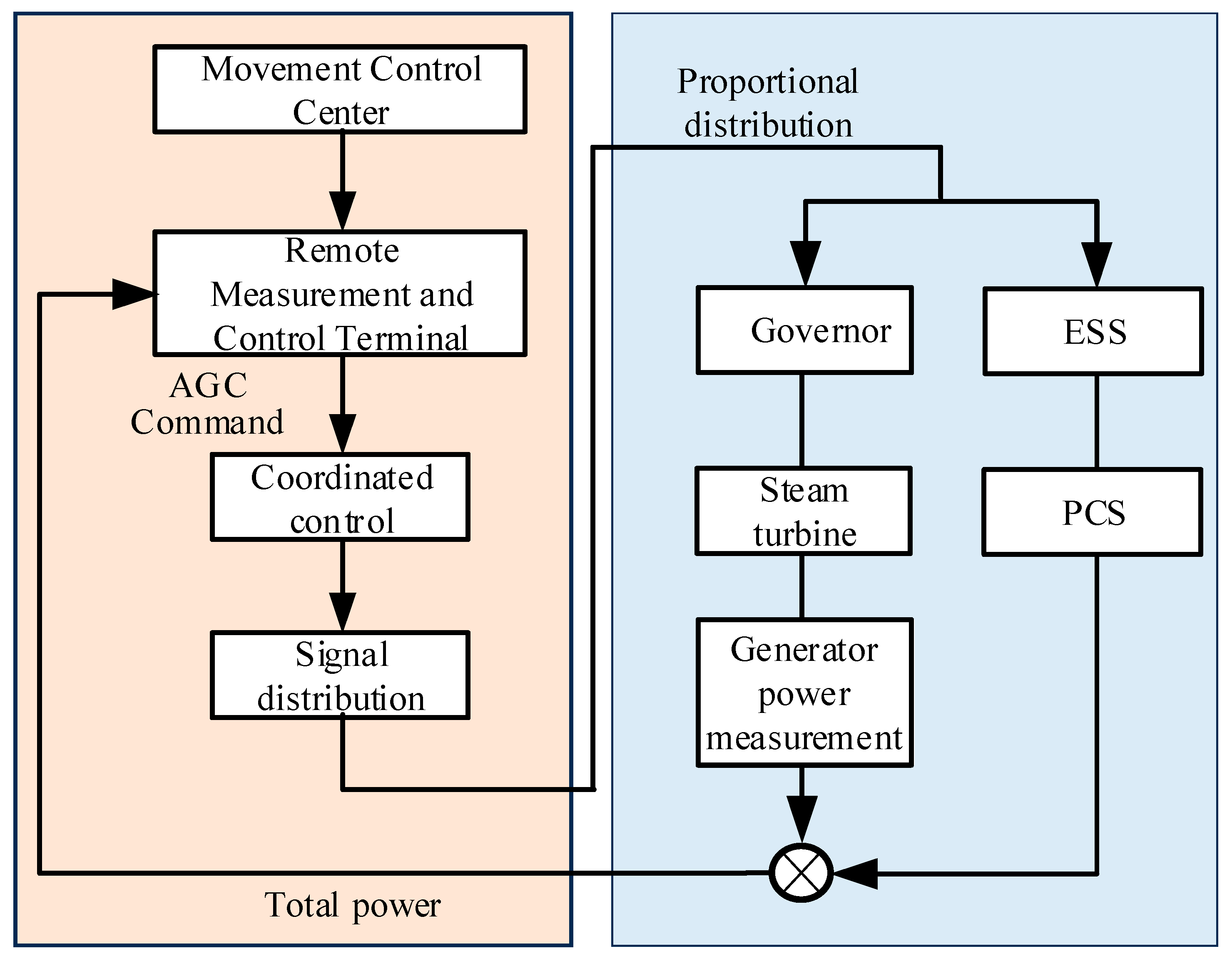

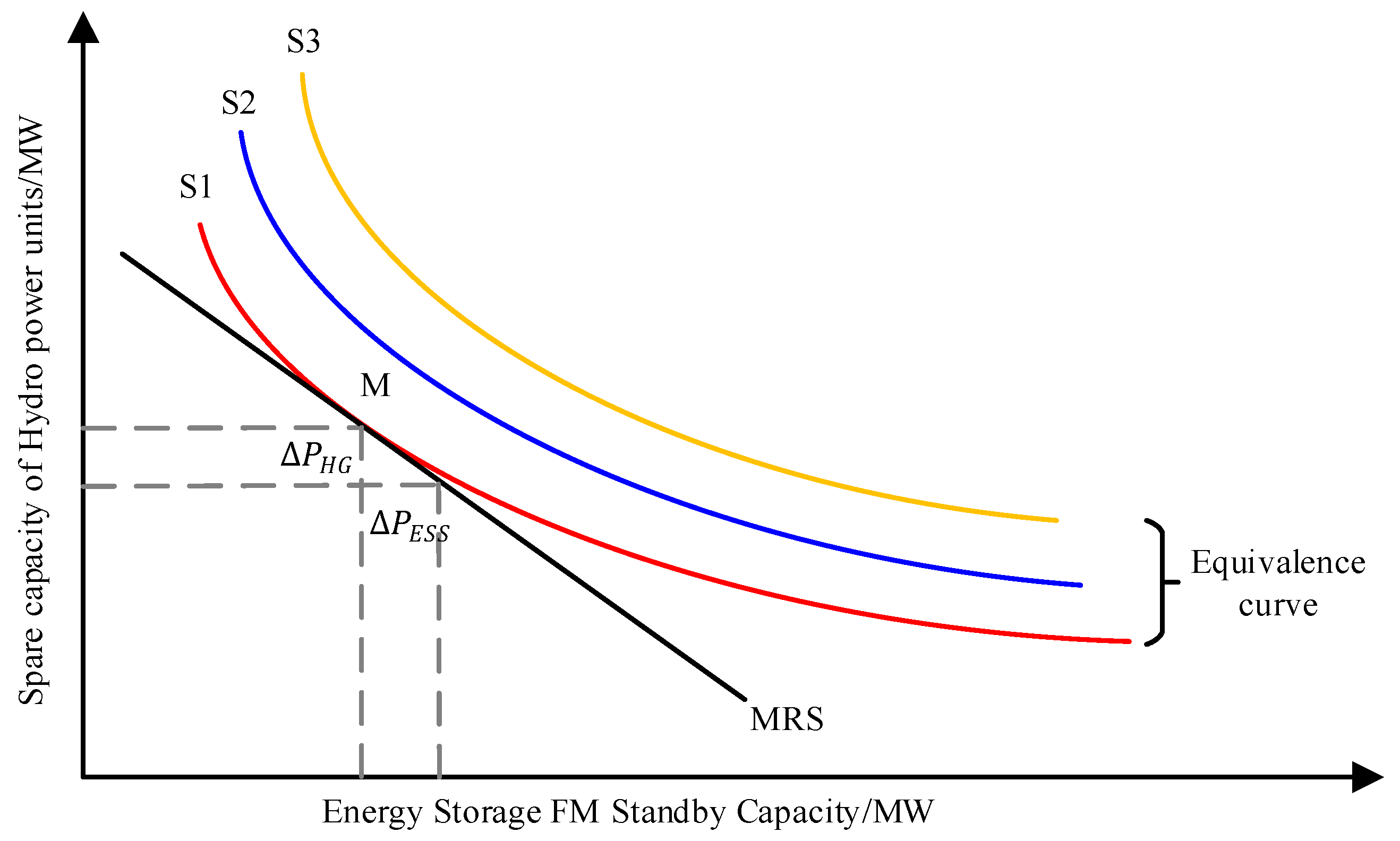



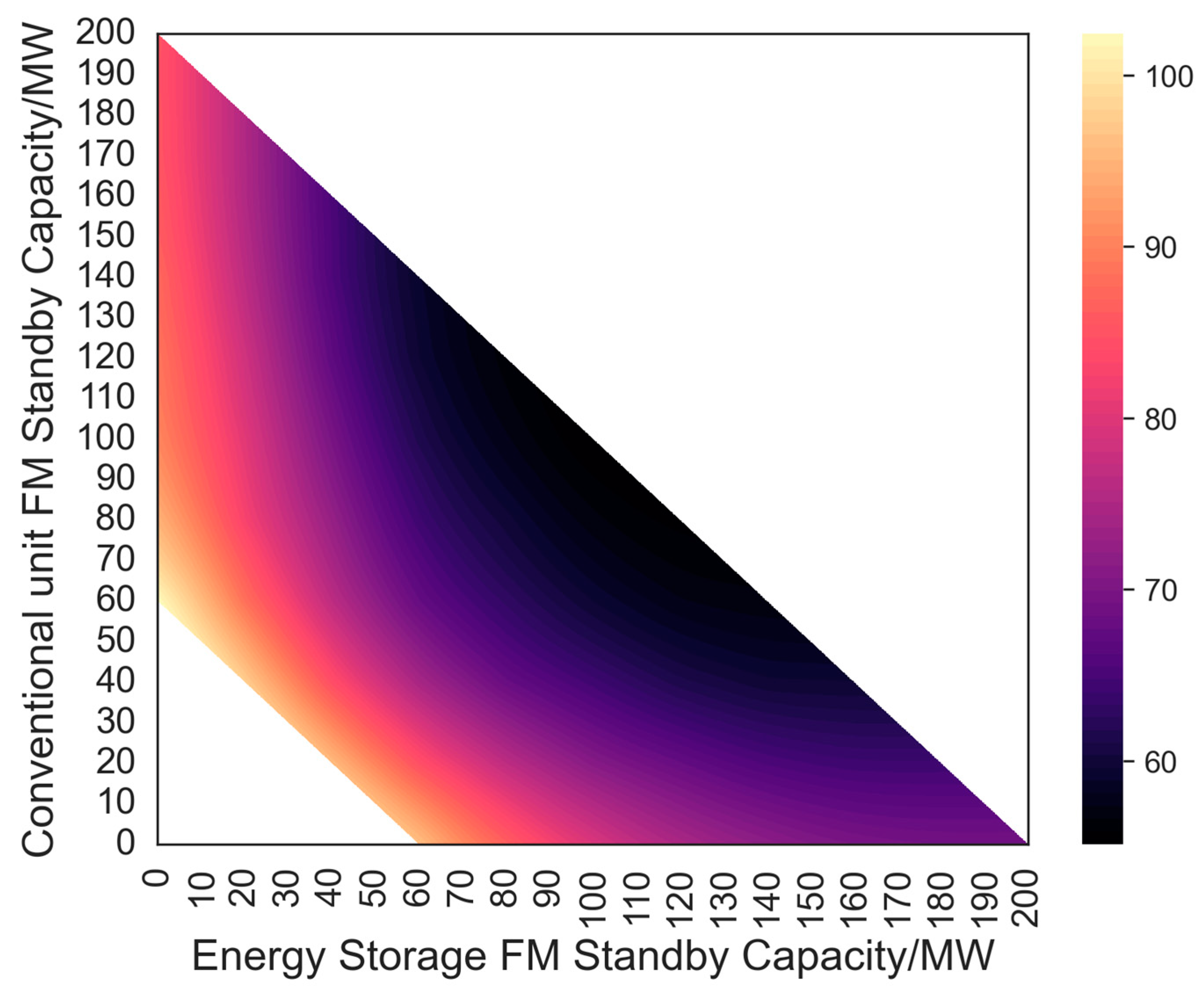
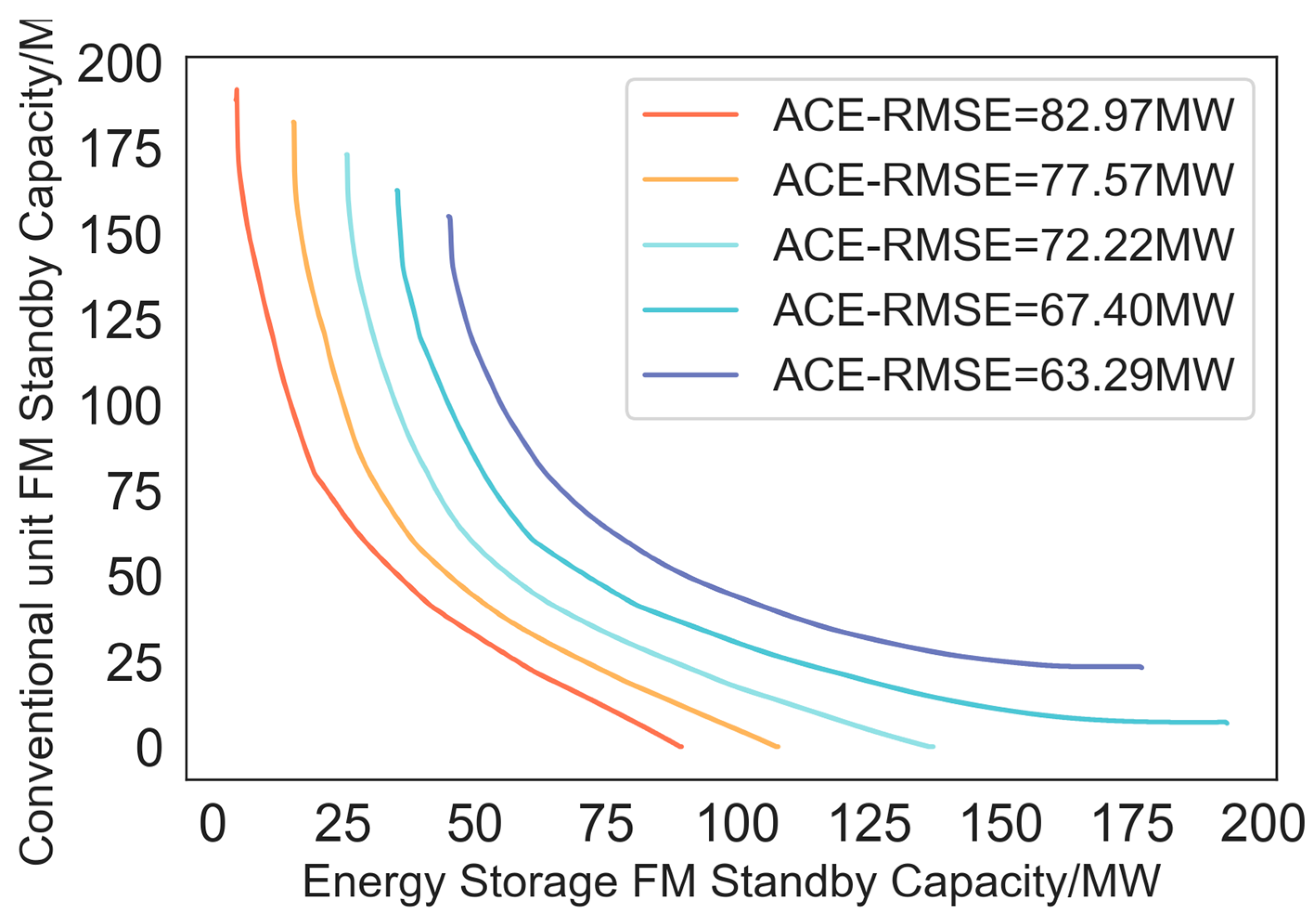
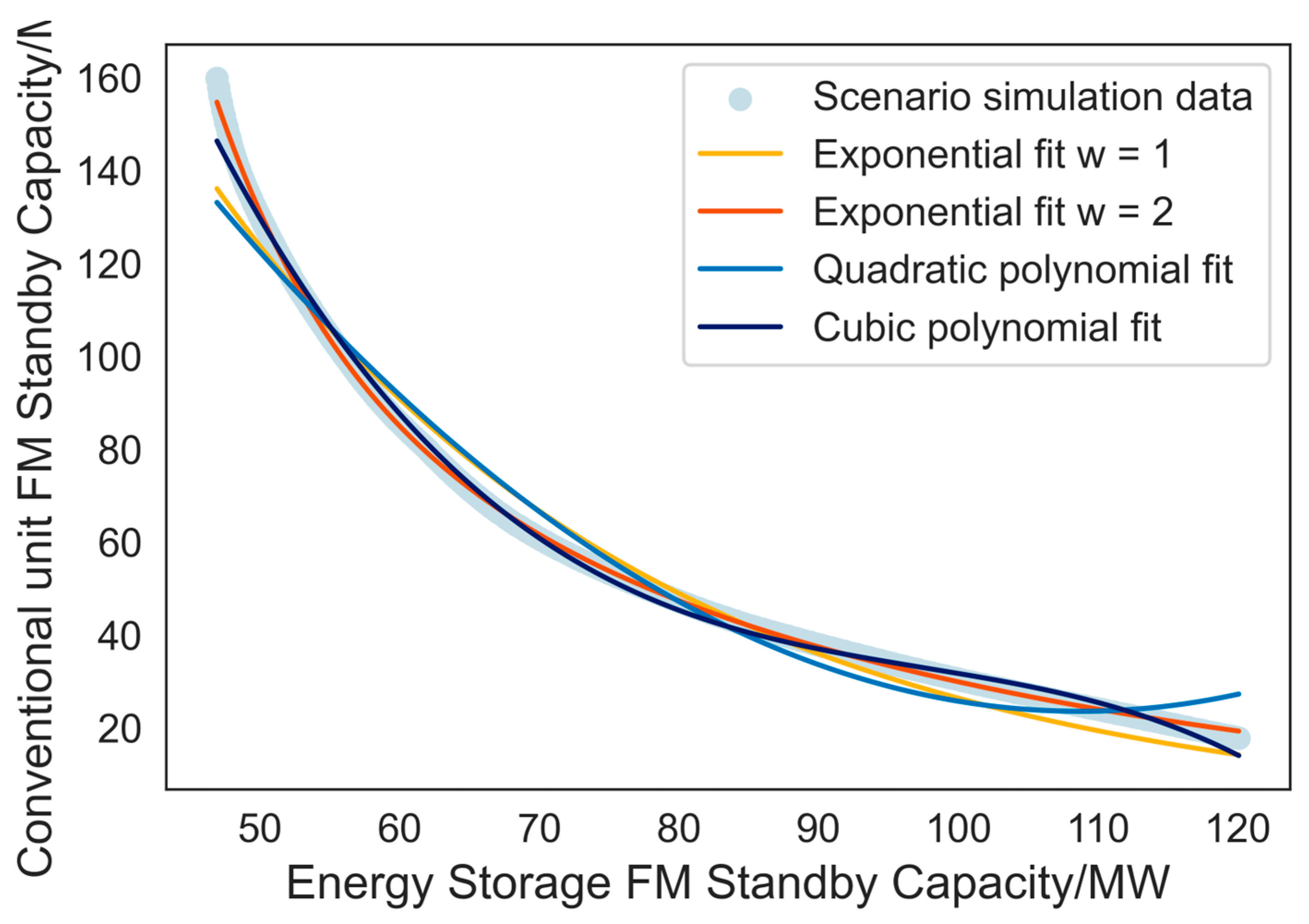
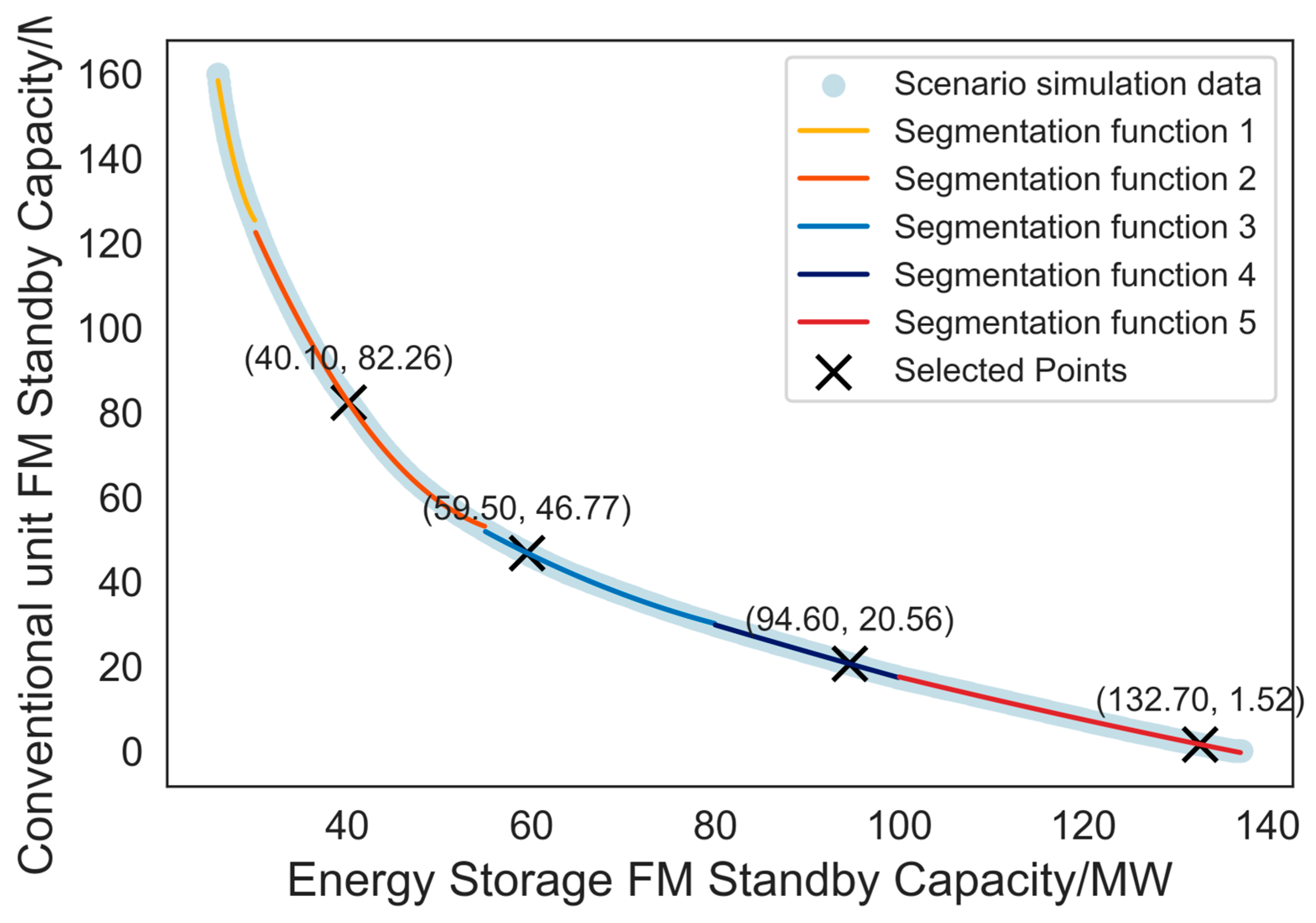


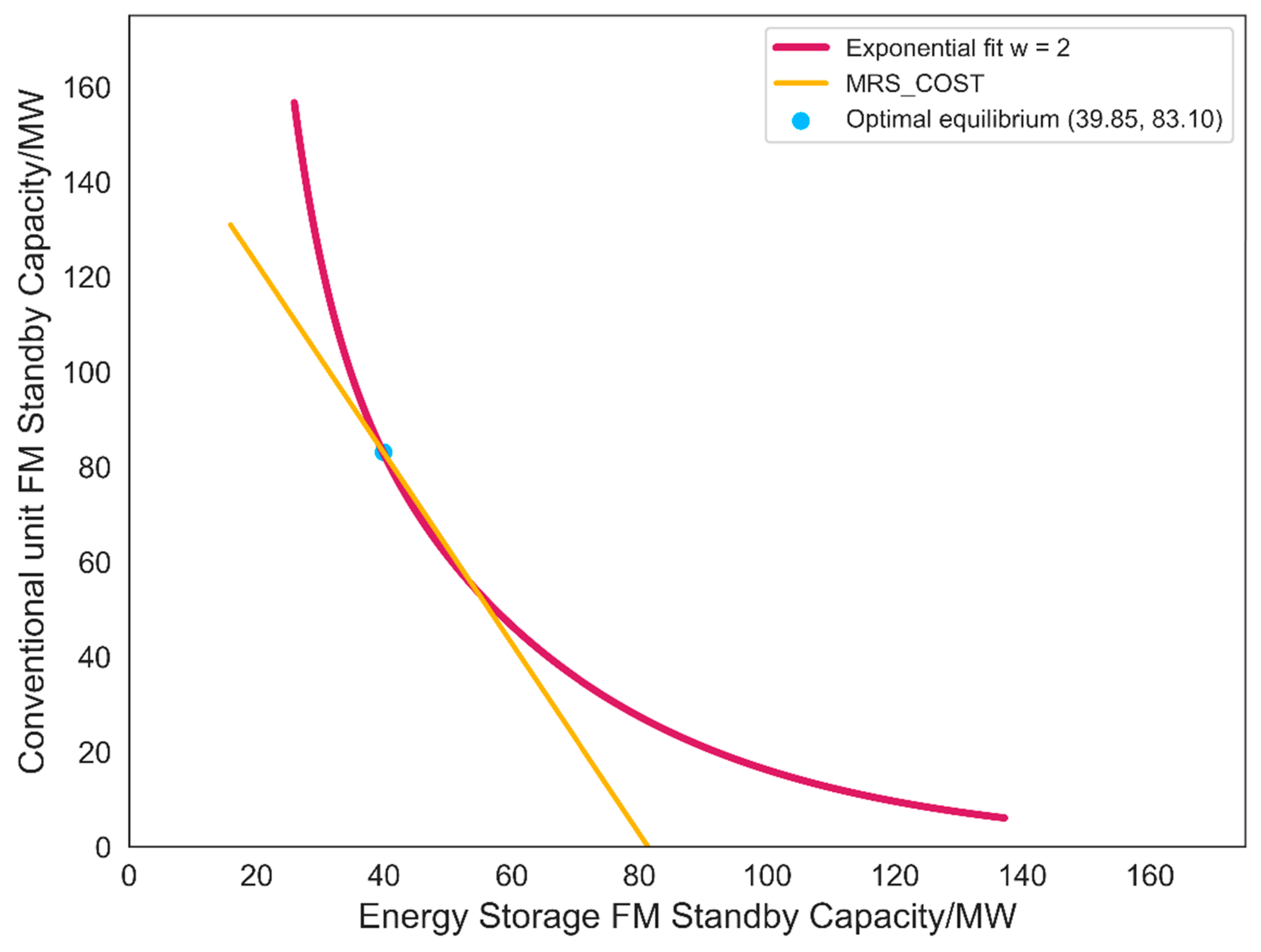
| Model Parameter | Value | |
|---|---|---|
| Hydropower unit | Active droop coefficient | 0.5 |
| Generator speed regulator time constant | 0.08 s | |
| Time constant of water hammer effect | 0.3 s | |
| ESS | Climbing time constant | 0.01 s |
| Equivalent system | Equivalent inertia constant | 10 MVA·s/MW |
| Damping coefficient | 1.0 N/m | |
| Control system | Frequency deviation coefficient | 21.0 MW/Hz |
| Proportional control parameters | 0.822 | |
| Integral control parameters | 0.16 | |
| Fitting Method | RMSE | |
|---|---|---|
| Index fitting | 3.38607 | |
| 1.39663 | ||
| Quadratic polynomial fitting | 6.70638 | |
| Cubic polynomial fitting | 2.87712 | |
| Segmented polynomial fitting | 0.03250 | |
Disclaimer/Publisher’s Note: The statements, opinions and data contained in all publications are solely those of the individual author(s) and contributor(s) and not of MDPI and/or the editor(s). MDPI and/or the editor(s) disclaim responsibility for any injury to people or property resulting from any ideas, methods, instructions or products referred to in the content. |
© 2025 by the authors. Licensee MDPI, Basel, Switzerland. This article is an open access article distributed under the terms and conditions of the Creative Commons Attribution (CC BY) license (https://creativecommons.org/licenses/by/4.0/).
Share and Cite
Sun, F.; Li, Q.; Wang, W. Frequency Regulation Reserve Allocation for Integrated Hydropower Plant and Energy Storage Systems via the Marginal Substitution. Electronics 2025, 14, 1582. https://doi.org/10.3390/electronics14081582
Sun F, Li Q, Wang W. Frequency Regulation Reserve Allocation for Integrated Hydropower Plant and Energy Storage Systems via the Marginal Substitution. Electronics. 2025; 14(8):1582. https://doi.org/10.3390/electronics14081582
Chicago/Turabian StyleSun, Fan, Quan Li, and Weiqing Wang. 2025. "Frequency Regulation Reserve Allocation for Integrated Hydropower Plant and Energy Storage Systems via the Marginal Substitution" Electronics 14, no. 8: 1582. https://doi.org/10.3390/electronics14081582
APA StyleSun, F., Li, Q., & Wang, W. (2025). Frequency Regulation Reserve Allocation for Integrated Hydropower Plant and Energy Storage Systems via the Marginal Substitution. Electronics, 14(8), 1582. https://doi.org/10.3390/electronics14081582





